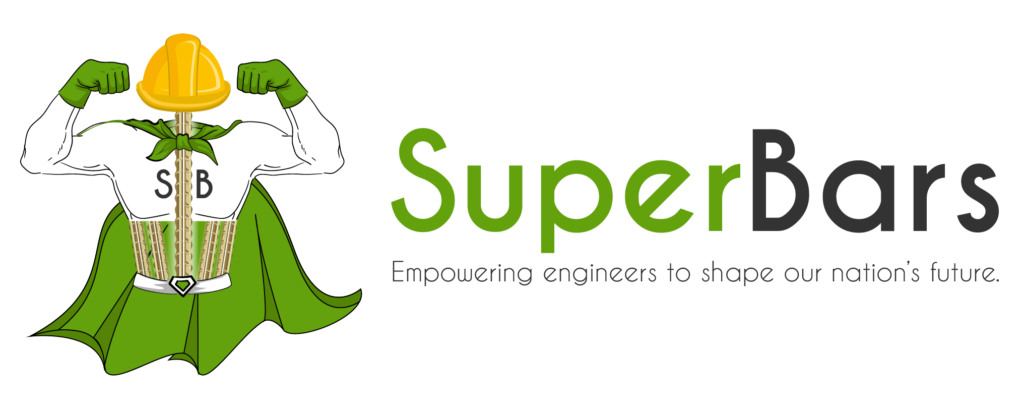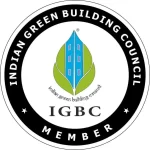Why Superbars™
SUPERBARS™ products are ideal for concrete infrastructure projects which are particularly susceptible to corrosion and harsh environmental conditions. Our corrosion-free and non-magnetic fiberglass products adhere to all ASI and CSA building codes. SuparBar is produced in both 40 GPa and 60 GPa strengths and can be supplied in any custom length and shape or bend including coils and helixes for foundations and pilings.
Q: How does SUPERBARS™ strength compare to steel?
A: SUPERBARS™ has a tensile strength of greater than 1000 MPa(145 ksi), in compare to steel, SUPERBARS™ can take over 2.5x the tensile load of steel before failure.
Q: How does SUPERBARS™ modulus of elasticity compare to steel?
A: SUPERBARS™ has tensile modulus of greater than 65 GPa(9427 ksi), in compare to steel, GFRP rebar is more flexible.
Q: How does SUPERBARS™ strain compare to steel?
A: SUPERBARS™ has tensile strain between 1.5% to 2.5%.
Q: What is the resistance of SUPERBARS™ to Alkali Environment?
A: SUPERBARS™ has tested according to CSA, ASTM & ACI standard for durability criteria, they both retain +90% of ultimate tensile capacity after 2160 hours of direct exposure to an alkali solution with a pH level of 13 at 60 degrees Celsius, in compare to steel, GFRP rebar is much more resistant than the highest grade of stainless steel.
Q: What is the maximum operating temperature of SUPERBARS™?
A: SUPERBARS™ meets with CSA, ASTM and ACI which Glass transition temperature of above 110 degree Celsius can be in direct contact to heat of up to 110 degree Celsius without losing the strength. SUPERBARS™ at 400 degree Celsius will lose it tensile strength from 1100MPa to about 650 MPa which is still higher than steel rebar at room temperature.
Q: What is the minimum operating temperature of SUPERBARS™?
A: SUPERBARS™ have tested according to ASTM standard at -40 degrees Celsius, and the effect was zero and in some case increase in performance.
Q: How does SUPERBARS™ price compare to Steel rebar and Stainless steel rebar?
A: SUPERBARS™ is much less than the cost of stainless steel. SUPERBARS™ price is very competitive to black steel rebar but when you consider all the savings due to labour cost, corrosion protection additives, cover concrete and Transportation the cost could be lower than steel rebar.
Q: How does SUPERBARS™ price compare to Epoxy-coated rebar(ECR) and galvanized rebar?
A: SUPERBARS™ is generally less expensive than galvanized and epoxy coated rebar and the total installed cost of GFRP rebar are much lower.
Q: Do we have to consider the initial cost of rebar?
A: Absolutely not! When factoring in the life cycle of the structure reinforced with SUPERBARS™ the cost of rebar at the initial stage could be eliminated in your budget since the cost of repair after 10-20 years due to corrosion could be as much as your rebar would cost at the initial stage.
Q: Why using SUPERBARS™ reduces the cost of the project?
A: Engineers are always factoring all the associated costs of the project, Some of these factors can be eliminated or reduced when considering the use of SUPERBARS™
- Installation & Transportation cost
- Handling and cutting
- Surface cover and ability to remove waterproofing membranes and 65mm asphalt
- DCI, CNI and other corrosion inhibitors
- Short & long term maintenance charges
Q: Can we replace GFRP rebar in ONE to ONE ratio of Steel bar?
A: SUPERBARS™ is three times stronger, but more flexible than steel rebar and it behave linear elastic to failure, therefore there is no yield point to be determined however the material can take significantly higher load. Engineers must follow the Codes and Standard for GFRP rebar and not Steel. In most cases where serviceability is not governing the design and it is based on Ultimate Limit State(ULS) you can simply substitute your steel to SUPERBARS™ High modules. If serviceability is governing the design, then it is recommended to do proper engineering to ensure all the deflections are controlled.
Q: What is the difference between GRADE I, GRADE II and GRADE III GFRP Rebar?
A: Pulstrong Composites manufacture as GRADE III according to CSA, Grade refers to modulus of elasticity of GFRP rebar. Pulstrong Composites only produces #3(10M) in Grade 1 for flatwork application. The remaining sizes are all in Grade III.
· GRADE I – E > 40GPa
· GRADE II – E > 50GPa
· GRADE III – E > 60GPa
Q: Can we use SUPERBARS™ rebar in active seismic regions(earthquake)?
A: YES, SUPERBARS™ can be used as reinforcement in concrete subjected to seismic loading conditions. SUPERBARS™ is capable of resisting reversal tension-compression cycles without failure. The large deformation, exhibited by GFRP material, allows the GFRP reinforced building to adequately dissipate the seismic energy. Currently more than 100 bridges and structures are reinforced with GFRP rebar in seismic regions. Although it has not been part of the code but there is no limit of why SUPERBARS™ cannot be used in seismic regions.
Q: What design guidelines should designer follow?
A: There are number of design guidelines available from CSA, ACI & IRC.
India
· IRC-137-22(Canadian highway bridge design code)
Canada
· CAN/CSA-S6(Canadian highway bridge design code)
· CAN/CSA-S806(Design and construction of building component with FRP)
USA
· ACI 378
· ACI 440.1R
· ACI 440.3R
· AASHTO GFRP-1
Q: Can we store SUPERBARS™ under sunlight exposure?
A: NO, if it is more than 2 months. SUPERBARS™ is made from thermoset Matrix that can be degraded by UV radiation, due to cost competitiveness, SUPERBARS™ does not have a UV-inhibiting binders. Always cover the SUPERBARS™ from direct UV radiation with tarp if it is store outside.
Q: Can we store SUPERBARS™ under rain and snow?
A: Absolutely, SUPERBARS™ can be store under rain and snow with no problem since the material cannot be corroded.
Q: What does end of life of SUPERBARS™ looks like?
A: SUPERBARS™ is made by Glass Fiber that is 100% recyclable and the resin that can be degrade by UV if exposed, however when it is in concrete the material can be crushed with concrete without the need to remove it after +100 years and it can be part of the next recycled concrete which makes the concrete stronger.
Q: Can you cure concrete with sea water?
A: Yes, if SUPERBARS™ is being used the concrete can be cured with sea water because of the non-corrosive nature. This could lead to the preservation of enormous amounts of fresh water.




